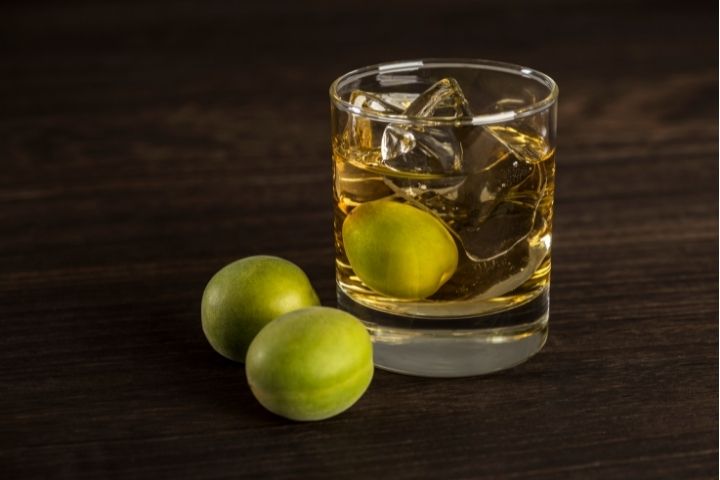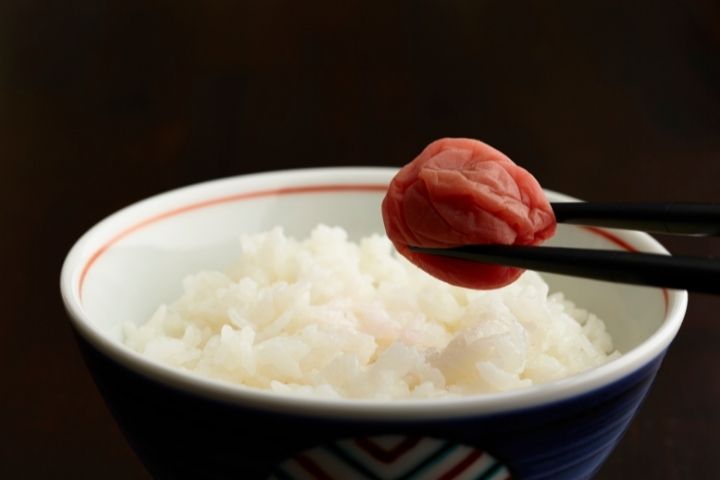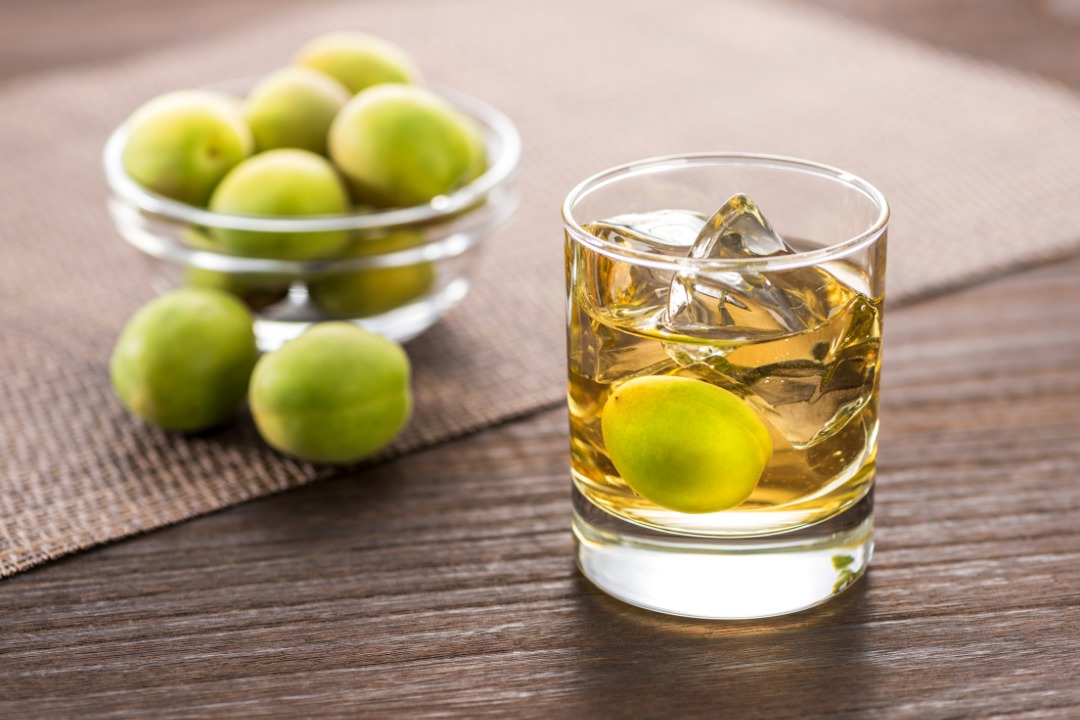During the spring, taking a one-day trip to view the plum blossoms in bloom has become a popular past-time for those looking to enjoy a sightseeing trip and enjoy a picnic with their families and friends. Outside of the plum flowering season, the time between the end of spring and just before typhoon season is when the Japanese plum (ume) floods the market.
Japanese plums (梅-ume) are important for the Japanese, not only for their beautiful flowers but also for their culinary uses. They are lime green when unripe and a peachy-beige color when ripe. Ume are tart, bitter, and definitely not for snacking on raw. However, there are several ume products that are famous for their delicious taste such as umeshu (梅酒-plum wine), umemiso (梅味噌-plum miso), ume syrup (梅シロップ) and umeboshi (梅干し-pickled plums).
Japan’s Ume Flavoring Obsession
Let’s look at each ume product to see how Japanese people enjoy them during ume season!
In Japan, although it is easiest and most convenient to purchase ume-related products at the local supermarket or convenience store, many people still make many of these items at home.
Umeshu (梅酒, Plum Wine)
Umeshu is a liquor made by soaking ume in liquor and sugar. The liquor—a Japanese traditional liquor called shochu (焼酎) is often used as the main ingredient, however, other less traditional alcohol types such as brandy, vodka, rum, or whiskey also work. And since umeshu doesn’t require much hard work (just a lot of fermentation), it is common for people to try their hand at making their own umeshu during from May-June when it is the season for ume plums.
 Credits: Canva.com
Credits: Canva.com
Umeshu can be served as a drink on its own or can be diluted with other drinks including soda water, tonic, water or green tea. For a tasty Umeshu-based drink, mixing with a yogurt drink is a tasty option for those who aren’t able to handle their alcohol as well.
Umeboshi (梅干し, Pickled Plum)
Umeboshi is recognized as a salty Japanese pickled plum. They can range in size from the size of a pea to the size of a golf ball, from smooth to very wrinkled, and from a tart, sour flavor to a softer, sweeter flavor. Umeboshi has been eaten by the Japanese for centuries and has recently been labeled a superfood for its beneficial functions such as aiding digestion and combatting fatigue.
 Credits: Canva.com
Credits: Canva.com
Umeboshi is often served whole on top steamed rice, used as a filling for onigiri (おにぎり, rice balls), cut up and stirred into okayu (お粥, rice porridge) and even added to pasta dishes and salads! Eating it may be a challenge for beginners because of its sourness. However, the more you eat, the more you will love it!
Umeboshi is easy to store, even at hot temperatures, which makes it a great emergency food for your house. However, it is not recommended to eat umeboshi too often, as it is quite salty. Everything in moderation!
Ume Syrup (梅シロップ)
Ume syrup is a sweet syrup made with ume and rock sugar. When ripe ume sits together with sugar, it produces a pungent syrup full of the tartness and aroma of the ume. It is usually enjoyed as a refreshing beverage or diluted with chilled water or soda water. During the summer, it is poured on top of shaved ice as a cooling dessert, used in baked goods or even in home-made salad dressings. As it contains no alcohol, it is suitable for all ages.
 Credits: Canva.com
Credits: Canva.com
Ume syrup can also be made at home using only two ingredients; frozen ume and rock sugar (koorizato-氷砂糖)—a type of sugar that comes in large crystals. The ratio of ume to rock sugar is 1:1, i.e. 500g ume will require 500g rock sugar. Reducing the amount of sugar is not recommended, as it helps preserve the ume. The rock sugar will slowly dissolve the plums, absorbing the flavor and then sinking to the bottom.
Umemiso (梅味噌, Ume Miso)
As the name suggests, umemiso is a combination of ume and miso. This home-made paste can be stored up to 3 months after pickling. There are various ways to enjoy umemiso, including in soups and dressings. For your soup, you can add toppings of konjac, cold tofu, or vegetables for a delicious meal! You can spread a little onto meat, fish, and rice balls. Or, you can add it into a soup stock to make noodle soup!
Ume—A Must-Try Flavour in Japan!
There are many ways you can try different kinds of food all from ume. Finally, make sure to try some ume products this coming plum season in June!
– Haley Tran/Vietnam
Related Articles:
- Japanese Cooking: Best Classes in English in Tokyo
- Japanese Bento 101: The 5 Types of Bento Boxes
- Conveyor Belt Sushi: Japan’s Food Entertainment
- 5 Strawberry Snacks You Should Try From Conbini
Featured photo credits: Canva.com






